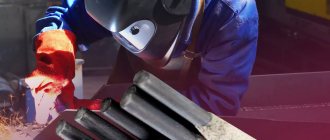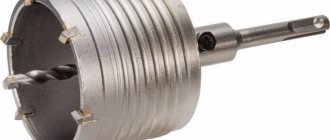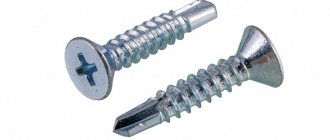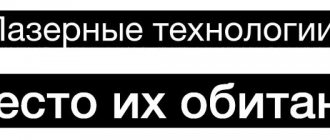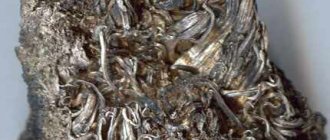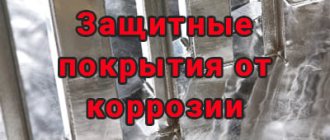When designing electrical networks in apartments or private houses, it is mandatory to calculate the cross-section of wires and cables. To carry out calculations, indicators such as the value of power consumption and the current strength that will flow through the network are used. Resistance is not taken into account due to the short length of cable lines. However, this indicator is necessary for long power lines and voltage drops in different sections. The resistance of the copper wire is of particular importance. Such wires are increasingly used in modern networks, so their physical properties must be taken into account when designing.
What affects the resistance of a copper wire
The electrical impedance of a copper cable depends on several factors:
- Specific resistance;
- Wire cross-sectional area;
- Wire lengths;
- External temperature.
The last point can be neglected in conditions of domestic use of the cable. A noticeable change in impedance occurs at temperatures above 100°C.
Resistance dependence
Resistivity in the SI system is denoted by the letter ρ. It is defined as the resistance value of a conductor having a cross-section of 1 m2 and a length of 1 m, measured in Ohm ∙ m2. This dimension is inconvenient in electrical calculations, so the unit of measurement Ohm ∙ mm2 is often used.
Important! This parameter is a characteristic of the substance - copper. It does not depend on the shape or cross-sectional area. The purity of the copper, the presence of impurities, the method of making the wire, and the temperature of the conductor are factors that affect the resistivity.
The dependence of the parameter on temperature is described by the following formula: ρt= ρ20[1+ α(t−20°C)]. Here ρ20 is the resistivity of copper at 20°C, α is an empirically found coefficient, from 0°C to 100°C for copper it has a value equal to 0.004 °C-1, t is the temperature of the conductor.
Below is a table of ρ values for different metals at a temperature of 20°C.
Resistivity table
According to the table, copper has a low resistivity, lower only for silver. This ensures good conductivity of the metal.
The thicker the wire, the lower its resistance. The dependence of R of the conductor on the cross-section is called “inversely proportional”.
Important! As the cross-sectional area of the cable increases, it is easier for electrons to pass through the crystal lattice. Therefore, with increasing load and increasing current density, the cross-sectional area should be increased.
An increase in the length of a copper cable entails an increase in its resistance. Impedance is directly proportional to the length of the wire. The longer the conductor, the more atoms there are in the path of free electrons.
The last element that affects the resistance of copper is the temperature of the environment. The higher it is, the greater the amplitude of movement of the atoms of the crystal lattice. Thus, they create an additional obstacle for electrons participating in directed movement.
Important! If you lower the temperature to absolute zero, which has a value of 0° K or -273°C, then the opposite effect will be observed - the phenomenon of superconductivity. In this state, the substance has zero resistance.
Silver
Ag - Silver.
A precious metal. Silver is the cheapest of the precious metals, but nevertheless too expensive to make wires from. 5% better electrical conductivity compared to copper, with a price difference of almost 100 times.
Application examples
In the form of coatings for conductors in microwave technology.
High-frequency current, due to the skin effect, flows along the surface of the conductor, and not in its thickness, therefore, a thin silver coating of the waveguide gives a greater increase in conductivity than silver coating of a conductor for direct current.
In alloys of contact groups.
The contacts of power and signal relays, switches, switches are most often made of an alloy containing silver. The transition resistance of such a contact is lower than copper, it is less susceptible to oxidation. Since the contact is usually miniature, the cost of this small addition of silver to the cost of the product is negligible. Although when recycling a large number of relays, the cost of silver makes it advisable to use side cutters to separate the contacts into a pile for subsequent refining.
16 Amp power relay contacts. According to the manufacturer's documentation, the contacts contain silver and cadmium.
Various relays. The top relay even has a silver-plated case with a characteristic patina. The content of precious metals in products produced in the USSR was indicated in the product passports.
As an additive in solders.
High-quality solders (both hard and soft) often contain silver.
Conductive coatings on dielectrics.
For example, to obtain a contact pad on ceramics, a suspension of silver particles is applied to it, followed by baking in an oven (the “burning in” method).
Component of electrically conductive adhesives and paints.
Electrically conductive inks often contain a suspension of silver particles. As the ink dries, the solvent evaporates and the particles in the solution move closer, sticking together and creating conductive bridges through which current can flow. A good video with a recipe for creating such ink.
Flaws
Despite the fact that silver is a noble metal, it oxidizes in an environment containing sulfur: 4Ag + 2H2S + O2 → 2Ag2S + 2H2O A
dark coating is formed - “patina”. Rubber can also be a source of sulfur, so rubber-insulated wire and silver-plated contacts are a bad combination. Tarnished silver can be cleaned chemically. Unlike cleaning with abrasive pastes (including toothpaste), this is the most gentle method of cleaning that does not leave scratches.
How to correctly calculate the resistance of a wire cross-section
When designing an electrical network, it is necessary to select the correct cable cross-section so that its resistance is not high. High impedance will cause the voltage to drop above the permissible value. As a result, an electrical device connected to the network may not work. Also, the wires will begin to overheat.
To correctly calculate the minimum cross-section, the following factors must be taken into account:
- According to PUE standards, the voltage drop should not be more than 5%.
- In everyday life, current flows through two wires. Therefore, when calculating, the resistance value must be multiplied by 2.
- You need to take into account the power of all connected devices on the line. For development, provide a load reserve.
How to calculate the resistance of a conductor using the formula? For example, we can consider the problem. It is necessary to determine whether a copper cable with a cross-section of 2.5 mm2 and a length of 30 meters will be sufficient to connect equipment with a power of 9 kW.
Electric circuit formulas
The problem is solved as follows:
- The resistance of a copper cable will be equal to:
2 ∙ (ρ ∙ L) / S = 2 ∙ (0.0175 ∙ 30) / 2.5 = 0.42 Ohm.
- To find the voltage drop, you need to determine the current strength using the formula: I= P/U.
Here P is the total power of the equipment, U is the voltage in the circuit. Then the current strength will be equal to: I = 9000 / 220 = 40.91 A.
- Using Ohm's law, you can find the voltage drop along the cable: ΔU = I ∙ R = 40, 91 ∙ 0.42 = 17.18 V.
- From 220 V the percentage drop will be: U% = (ΔU / U) ∙ 100% = (17.18 / 220) ∙ 100% = 7.81%>5%.
The voltage drop is outside the permissible value, which means it is necessary to use a cable with a larger cross-section.
Aluminum
Al - Aluminum.
The “winged metal” is the fourth most conductive after silver, gold and copper. Although aluminum conducts current almost one and a half times worse than copper, it is 3.4 times lighter and three times cheaper. And if you calculate the conductivity, then an aluminum conductor equivalent to copper will be 6.5 times cheaper! Aluminum would have replaced copper as a conductor everywhere, if not for a couple of its nasty properties, but more on that in the downsides.
Pure aluminum, like pure iron, is practically not used in technology (exceptions are wires and foil). Any “aluminum” object consists of some kind of aluminum alloy. Alloys may contain silicon, magnesium, copper, zinc and other metals. Their properties differ greatly, and this must be taken into account during processing. Below are some of the most common grades of aluminum:
- 1199. Pure 99.99% aluminum. It comes almost exclusively in the form of foil.
- 1050 and 1060. Pure 99.5% and 99.6% respectively. Due to its high thermal conductivity, it is sometimes used as a material for radiators. Soft, easy to bend. Wires, food foil, dishes.
- 6061 and 6082. Alloys: 6061 - Si 0.6%, Mg 1.0%, Cu 0.28%, 6082 - Si, Mg, Mn. The first is more common in the USA, the second in Europe. Easy to sharpen and mill. The best material for homemade products. Durable. Easy to weld, soldered with hard solders. Easily anodized. Doesn't bend well. Not suitable for casting.
- 6060. Composition: Mg, Si. Softer than 6061 and 6082, it has a slightly “plasticine” feel when cutting, which is why turners don’t like it. Common and cheap, has no other special advantages. A cheap aluminum profile made from an unknown alloy has a good chance of being one.
- 5083. Magnesium alloy (>4% Mg). Excellent corrosion resistance, stable in sea water. One of the best options for parts that work in the rain. It can also be found in a building materials store, along with other similar brands.
- 44400, also known as “silumin”. Alloy with a high percentage of silicon (Si >8%). Casting. Low melting point; when soldering with hard solders, there is a risk of melting the part itself. It is fragile and breaks when bent. Characteristic crystals are visible at the fracture.
- 7075. 2.1-2.9% Mg, 5.1-6.1% Zn, 1.2-1.6% Cu. A very unique alloy, even different in color (the oxide film is slightly golden). Unexpectedly hard for aluminum, comparable in hardness to mild steel. Poor anodization. Doesn't solder at all. Doesn't weld at all. Doesn't bend or forge at all. Not suitable for casting. It is perfectly processed by cutting and polishes perfectly. Good for critical parts. Used for screws in bicycles, in weapons (material of many parts of the M16 rifle).
The relatively low melting point (660 °C for pure aluminum, less than 600 °C for cast alloys) of aluminum makes it possible to cast parts in sand molds in a garage/workshop. However, many grades of aluminum are not suitable for casting.
Application examples
Wires.
Aluminum is cheap, so it is advantageous to make thick power cables, SIPs, and power lines from aluminum. In old houses, apartment wiring is made with aluminum wire (since 2001, the PUE prohibits the use of aluminum wire in apartments, only copper, see PUE 7th edition, paragraph 7.1.34) Also, aluminum is not used as a conductor in critical applications.
On the left is an old aluminum wire. On the right are aluminum cables of various sections, suitable for laying in the ground. In particular, the cable on the right connected the entire floor of the building to electricity. In addition to the outer rubber sheath, the cable has an armoring steel tape to protect the underlying insulation from damage, for example, with a shovel during excavation.
Heat sinks.
Not only home batteries are made of aluminum, but also radiators for microcircuits and processors are made of aluminum.
Various aluminum radiators.
Instrument housings.
The hard drive housing in your computer is cast from aluminum alloy. A small addition of silicon improves the strength properties of aluminum; silumin alloy is used for housings of hard drives, household appliances, gearboxes, etc.
Anodized aluminum (aluminum in which the oxide film on the surface is made thicker and stronger by electrochemical means) is easy to paint and simply beautiful. The oxide film (Al2O3 - the same substance the precious stones rubies and sapphires are made of) is quite hard and wear-resistant, but unfortunately the aluminum underneath is soft, and under strong impact it breaks like ice on water.
Screens.
Electromagnetic shielding is often made of aluminum foil or thin aluminum sheet. You can conduct a simple experiment: a mobile phone wrapped in foil will lose the network - it will be shielded.
Reflective coating on mirrors.
A thin film of aluminum on glass reflects 89% of the incident light (approximate value, depends on conditions) (Silver 98%, but darkens in air due to sulfur compounds). Any laser printer contains a rotating mirror coated with a thin layer of aluminum.
Mirrors from the optical system of a flatbed scanner. Please note that optical mirrors have glass metallization on the outside, unlike conventional household mirrors, which have a reflective coating for protection behind the glass. Household mirrors give a double reflection - from the surface of the glass and from the reflective coating, which is not as critical in everyday life as the protection of the reflective coating.
Electrodes of capacitor plates.
Aluminum foil, separated by a layer of dielectric and tightly rolled into a cylinder, is part of electrical capacitors (however, to reduce the size of capacitors, the foil is replaced with aluminum coating). The fact that the aluminum oxide film is thin, durable and does not conduct current is used in electrolytic capacitors, which have huge electrical capacitances for their size.
Flaws
Aluminum is an active metal
, but in air it becomes covered with an oxide film, which protects the metal from destruction and hides its active nature. If you prevent aluminum from forming a stable protective film, for example with a drop of mercury, aluminum reacts actively with water. Aluminum dissolves in an alkaline environment; try pouring a pipe cleaner on aluminum foil - the reaction will be violent, releasing explosive hydrogen. The chemical reactivity of aluminum, coupled with the large difference in electronegativity with copper, makes it impossible to directly connect wires from these two metals. In the presence of moisture (and there is almost always moisture in the air), galvanic corrosion begins to occur with the destruction of aluminum.
Two identical transformers from microwave ovens. The left one failed due to aluminum windings - the wire burned off from the contact - aluminum is poorly soldered with soft solders, an attempt to ensure contact in the same way as with a copper wire led to a breakdown.
Aluminum creeping.
If an aluminum wire is compressed very hard, it will deform and retain its new shape - this is called “plastic deformation”. If you compress it not so much that it does not deform, but leave it under load for a long time, the aluminum will begin to “crawl,” changing shape gradually. This nasty property leads to the fact that after 5-10-20 years, a well-tightened terminal with an aluminum wire will gradually weaken and dangle, not providing the former electrical contact. This is one of the reasons why the PUE prohibits thin aluminum wire for distributing electricity to consumers in buildings. In industry, it is not difficult to ensure regulation - the so-called “pulling” of the panel, when an electrician periodically checks the tightness of all terminals in the panel. At home, usually until the socket burns out with smoke, no one will worry about the quality of the contact. And poor contact is the cause of fires.
Aluminum, compared to copper, is less ductile
, the risk from a knife on the core, when removing insulation from a wire, will lead to a broken core faster than with copper, so the insulation from aluminum wires must be peeled off like a pencil, at an angle, and not at the end.
Interesting facts about aluminum
- Aluminum is a good reducing agent and is used to restore other metals, such as titanium, from their dioxide state. Theodore Gray (I highly recommend Theodore Gray's books "Elements. A Guide to the Periodic Table", "Scientific Experiments with the Periodic Table", "Experiments. Experiments with the Periodic Table". They are very well done visually, and the experiments in them are not cloyingly safe, as in Most modern manuals may fail.) I conducted such an experiment at home. When mixed with iron oxide, aluminum powder forms thermite - a hellish mixture that burns, heating up to 2400°C, while the iron is reduced and funnels down, which is used for welding rails; otherwise, such a piece of iron cannot be heated efficiently and quickly. Thermite pencils allow you to weld wires in the field, and a brave special forces soldier will burn through the shackle of the strongest lock with a thermite torch.
- Baking powder is used to make the sponge cake tender and airy. There is the same powder for making concrete porous - Aluminum + alkali.
- Aluminum is a reactive metal, but it quickly becomes coated with an oxide film, which protects it from destruction.
Ruby, sapphire, corundum - these are all names for the same substance - aluminum oxide Al2O3. White grinding wheels and whetstones consist of electrocorundum - aluminum oxide. You can verify the activity of aluminum by simple experiment. Cut aluminum foil into a glass, add copper sulfate and table salt, and fill with cold water. After some time, the mixture will boil, aluminum will oxidize, reducing copper, releasing heat. - Aluminum lends itself well to extrusion. Device housings made from cut and processed extruded profiles are much cheaper than cast ones.
Aluminum external battery case for phone. Extruded anodized painted profile. - Aluminum is very mediocrely soldered with soft (tin-lead) solders, and soldered well with zinc solders. When designing devices, it is worth remembering that it is easier to connect the wire to the aluminum chassis by screwing it to a press-fitted stand than by soldering it. In hard grades of aluminum (6061, 6082, 7075), the thread for the screw can be cut directly.
- Aluminum can be welded using argon welding, but a high-quality weld can only be obtained using TIG welding with alternating current. Continuously changing the polarity shreds the oxide film, which could otherwise get into the seam. Consider this when choosing a welding machine for your workshop if you may also need to weld aluminum.
Once again an important note. Aluminum and copper conductors cannot be connected directly! To connect copper and aluminum conductors, use an intermediate metal such as a steel terminal.
Sources
Large construction stores (OBI, Leroy Merlin, Castorama) usually have aluminum profiles in stock in various sizes and shapes. Stamped aluminum cookware is a good source - it's very cheap and comes in different shapes. But pay attention to the brands. If you need 6061, and even more so 7075, you will have to buy it from a company specializing in metals.
Links to parts of the manual:
: Conductors: Silver, Copper, Aluminum. : Conductors: Iron, Gold, Nickel, Tungsten, Mercury. : Conductors: Carbon, nichrome, heat-stable alloys, solders, transparent conductors. : Inorganic dielectrics: Porcelain, glass, mica, ceramics, asbestos, SF6 gas and water. : Organic semi-synthetic dielectrics: Paper, lye, paraffin, oil and wood. : Synthetic dielectrics based on phenol-formaldehyde resins: carbolite (bakelite), getinax, textolite. : Dielectrics: Fiberglass (FR-4), varnished fabric, rubber and ebonite. : Plastics: polyethylene, polypropylene and polystyrene. : Plastics: polytetrafluoroethylene, polyvinyl chloride, polyethylene terephthalate and silicones. : Plastics: polyamides, polyimides, polymethyl methacrylate and polycarbonate. History of the use of plastics. : Insulating tapes and tubes. : Final
Conductor resistivity table. Table of metal resistivities.
| Project of Charles III Rebane and good company | Section of the week: Strengthening concrete. Concrete hardening time. Heat release of cement (concrete mixture) | ||
| We are on Facebook: DPVA.ru on Facebook We are on VKontakte: | The address of this page (nesting) in the dpva.ru directory: main page / / Technical information / / Physical reference book / / Electrical and magnetic quantities / / Electrical resistance and conductivity of conductors, solutions, soils…. // Table of conductor resistivities. Table of metal resistivities. | Specific resistance ρ, Ohm*mm2/m | α, 10 -3*C-1 (or K -1) |
| Aluminum | 0,028 | 4,2 | |
| Bronze | 0,095 — 0,1 | — | |
| Bismuth | 1,2 | — | |
| Tungsten | 0,05 | 5 | |
| Iron | 0,1 | 6 | |
| Gold | 0,023 | 4 | |
| Iridium | 0,0474 | — | |
| Constantan (Ni-Cu + Mn alloy) | 0,5 | 0,05! | |
| Brass | 0,025 — 0,108 | 0,1-0,4 | |
| Magnesium | 0,045 | 3,9 | |
| Manganin (alloy of copper, manganese and nickel - instrument) | 0,43 — 0,51 | 0,01!! | |
| Copper | 0,0175 | 4,3 | |
| Molybdenum | 0,059 | — | |
| Nickel silver (an alloy of copper, zinc and nickel) | 0,2 | 0,25 | |
| Sodium | 0,047 | — | |
| Nickelin (an alloy of copper and nickel) | 0,42 | 0,1 | |
| Nickel | 0,087 | 6,5 | |
| Nichrome (an alloy of nickel, iron chromium and manganese) | 1,05 — 1,4 | 0,1 | |
| Tin | 0,12 | 4,4 | |
| Platinum | 0.107 | 3,9 | |
| Mercury | 0,94 | 1,0 | |
| Lead | 0,22 | 3,7 | |
| Silver | 0,015 | 4,1 | |
| Steel | 0,103 — 0,137 | 1-4 | |
| Titanium | 0,6 | — | |
| Fechral (Cr (12-15%); Al (3.5-5.5%); Si (1%); Mn (0.7%)); + Fe) | 1,15 — 1,35 | 0,1 | |
| Hromal | 1,3 — 1,5 | — | |
| Zinc | 0,054 | 4,2 | |
| Cast iron | 0,5-1,0 | 1,0 |
Search the DPVA Engineering Handbook. Enter your request:
If you do not find yourself in the list of suppliers, notice an error, or have additional numerical data for colleagues on the topic, please let us know. Please include a link to the page with the error in your letter. The project is non-commercial. The information presented on the site is not official and is provided for informational purposes only. The owners of the website www.dpva.ru do not bear any responsibility for the risks associated with the use of information obtained from this Internet resource.www.dpva.ru


